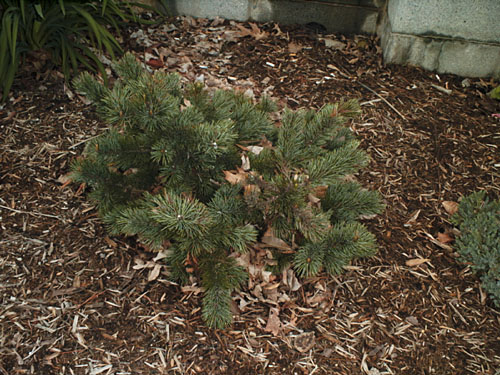Pinus aristata
Bristlecone Pine, Hickory Pine
Pinaceae
ExpandHabitat
- native to mountainous regions of the southwestern United States
- cold hardy to zone 4
Habit and Form
- evergreen small tree, up to 20 ft.
- dwarf and irregular growth habit
- very attractive picturesque form
- medium texture
- very slow growth rate, making mature height irrelevant
Summer Foliage
- 5 needles per fasicle
- approx. 1" in length
- dark green needles
- needle undersides are whitish
- needles are tightly packed on the branches
- white resin dots on the needles are numerous; mistaken for scale
Autumn Foliage
- no fall color (remains green)
- needles can persist over 15 years
Flowers
- monoecious
- no ornamental value
Fruit
- dark puplish brown cone
- oviod, 3.5" long
- each cone scale has a thorn-like appearance at tip, hence the common name Bristlecone
Culture
- in native habitat, found on dry, rocky, soils
- full sun
- pH adaptable
- not tolerant of polluted air
- tolerant of wind
- very long-lived
Landscape Uses
- potted plant
- good accent plant in rock garden
- patio plant
- remains in scale to landscape for a great many years
Liabilities
- very slow growth in landscape
- cones can hurt if stepped on
- rare and hard to find
ID Features
- needles in 5's, tufted apperance
- dwarf habit
- white flecks on needles
- thorn-like tips on pine scales
- retention of several years of needles
Propagation
- by seed, no treatment is needed for good germination
Cultivars/Varieties
'Sherwood Compact' - Regarded as a handsome slow-growing form of the species, such a plant will clearly remain a prize for collectors only. After 15 years of healthy growth, a specimen of the species may fail to exceed 4' in height. Given this sluggish growth, one can only imagine the miniscule annual progress of a "dwarf form".
